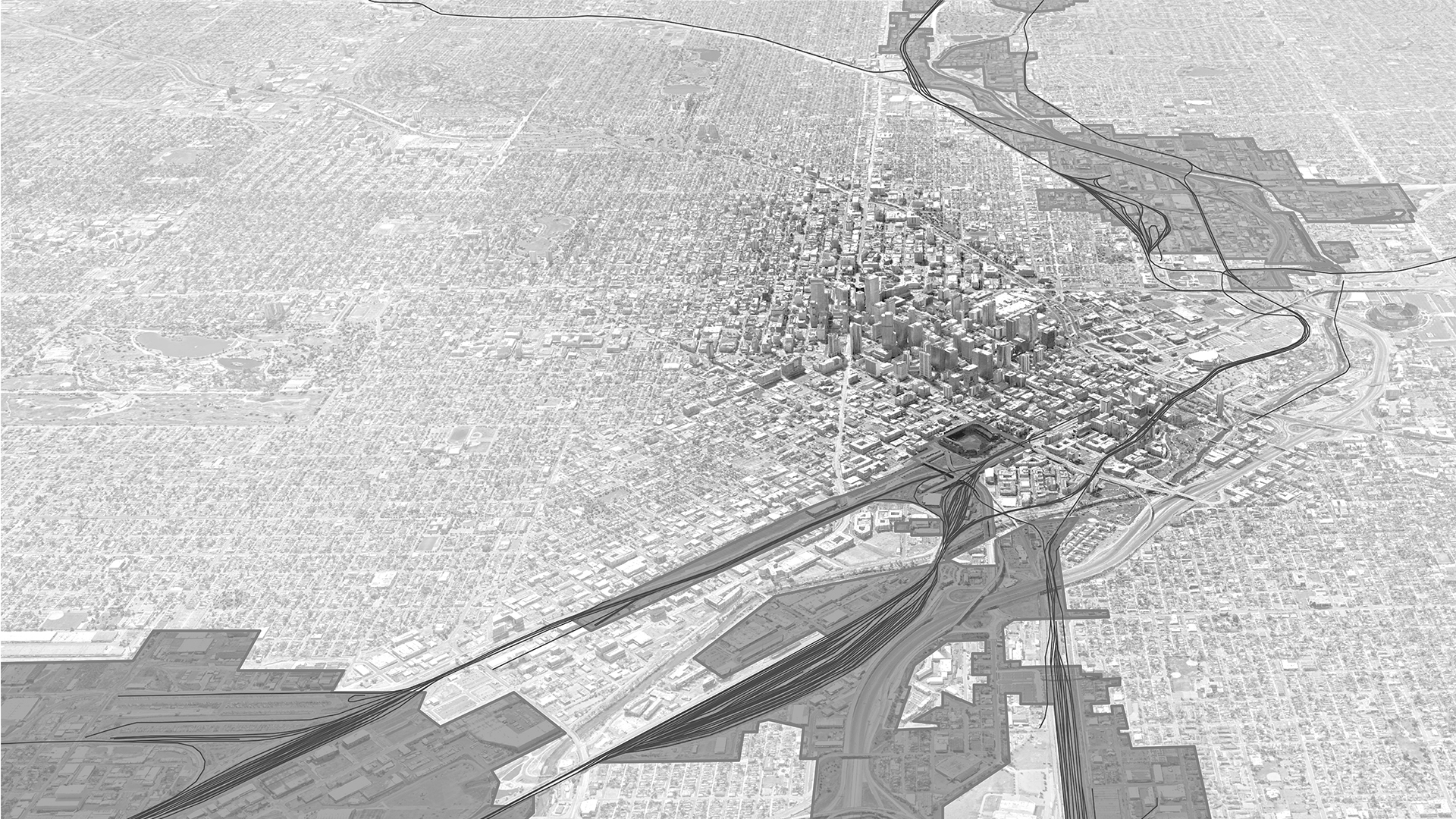
This in-progress topical project focuses on four transportation infrastructures as keystones for urban design. The project aggregates built port, river, rail, and road infrastructure reuse and co-use projects in order to understand the outsized social, environmental, and economic impacts that these linear systems have had relative to their acreage. We are in a moment when densification and urban livability is important for reduced energy use, yet public funding for urban amenities like parks and alternative transportation in the U.S. is paltry. A review of 400 international projects with varied funding mechanisms and partnerships demonstrate creative uses for urban land that leverage co-benefits like climate change adaptation, carbon mitigation, strengthening community bonds, increased health outcomes, no-carbon transportation, urban cooling, low-impact stormwater management, and community development by pairing natural and nature-based solutions (NNBS) with transportation corridors. In addition, the project distills the five main strategies employed, provides a methodology for identifying infrastructural assets and opportunities for any city, relates the impacts of historical public space networks 100 years later, and documents lessons learned about greening, gentrification, displacement, and community process. The project extends SWA’s work on infrastructure.
RESEARCH TEAM
Anya Domlesky, Emily Schlickman, and Jonah Susskind, XL research and innovation Lab at SWA
Gerdo Aquino, Ying-yu Hung, Esther (Xuezhen) Xie, Haoyu Zhao, Hillary DeWildt, Kapp Singer, Amanda Ton, Michael Siu, and Yaxin Cao, SWA
Elvis Wong, SWA, XL Lab
Louisa Kennett
Maria Ulloa
Slide Kelly, Slide Kelly Cartographic, LLC
Xinlei Gu
Sydnie (Xinyi) Zhang
THANKS TO
Catherine Nagel, City Parks Alliance
Anne Olson, Buffalo Bayou Partnership
Asima Jansveld, The High Line Network
Marie Law Adams and Dan Adams, Landing Studio
Yuxiang Luo, James Lima JLP+D
Ben Helphand, Friends of Bloomingdale Trail
Meghan Injaychock, Atlanta Beltline, Inc
Lynnette Reid, Atlanta Beltline, Inc
Philip Hiatt Haigh, Circuit Trail Conservancy
Michelle Woods, City of Chicago
Marc Boutin, MBAC
Rahid Cornejo, Bergen Arches Preservation Coalition
Terry Savage, formerly National Park Service
Rebecca Popowsky, OLIN
Adam Novack, Waterfront Toronto
Vince Tam, HNTB
BSA Space
Danika Cooper, University of California, Berkeley
Michele Richmond, Weber Thompson
Cali Pfaff, Design Workshop
Tom Balsley, SWA/Balsley
Drew Watkins, Natalia Beard, Joe Runco, Chuck McDaniel, Scott McCready, Shuyi Chang, Xiao Zheng, Hui-Li Lee, René Bihan, Peiwen Yu, Daniel Cunningham, Kerri da Silva, Masako Ikegami, Kristen Taylor, Jeremy Klemic, Todd Strawn, SWA
FEATURED
AIA/ACSA Intersections Research Conference
“Infrastructure Corridors: Leveraging Linear Systems for Public Life”
National Planning Conference
“Growing Your City Open Space First”
The Urban Land Institute (ULI) Spring Meeting
“Infrastructure Adaptation: Opportunity Space for Multi-benefit Public Use”
Cornell University, College of Architecture, Art, and Planning
City Parks Alliance Greater Greener Conference. Park Lab
“Opportunity Time: Windows for Funding Public Space Creation”
High Line Network Symposium: Forward Spaces
“Infrastructure Investment & Social Inequity”
American Association of Geographers Annual Meeting
“Post-industrial to Post-infrastructural: Networks Over Parcels for Impactful Urban Change”
University of Toronto, John H. Daniels Faculty of Architecture, Landscape, and Design, Department of Architecture
FINDINGS
Forthcoming
RELATED PROJECTS
Middleweights: Metros at the Vanguard of American Urbanism
Infrastructure Research Initiative
Hunter’s Point South Waterfront Park
Gantry Plaza State Park
Shekou Promenade
Shenzhen Bay Coastline Park
Shekou Mountain Park
Golden Gate National Recreation Area (GGNRA)
Tianjin Eco-City
Tianjin Lingang
Kobe Waterfront Arena
Nelson Mandela Park Master Plan
Bayou Greenways
Buffalo Bayou Park
Buffalo Bayou Smith to Travis Streets Trail Segment
Rosemont Pedestrian Bridges and Trails
Milton Street Park
Changsha Baxizhou Island
Harvey Milk Plaza
Katy Trail
SKY Highline Plaza
Sava Promenada at the Belgrade Waterfront
Ricardo Lara Linear Park
Suzhou Center Bridges
Southern Gateway Public Green
Portsmouth Square
Houston’s Gateway Art Bridges
El Paso Pedestrian Pathways
San Jacinto Plaza

